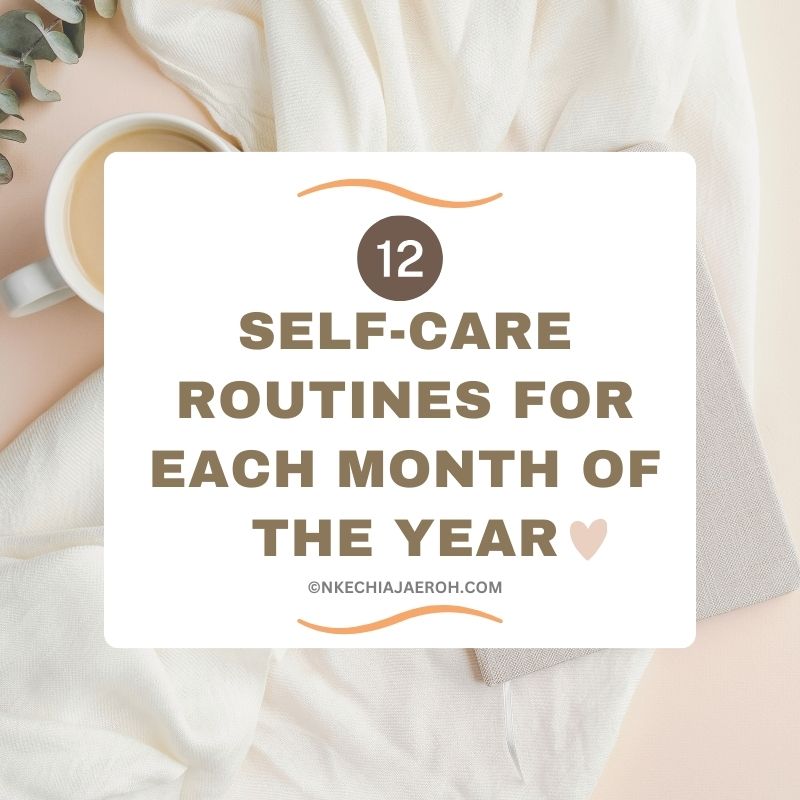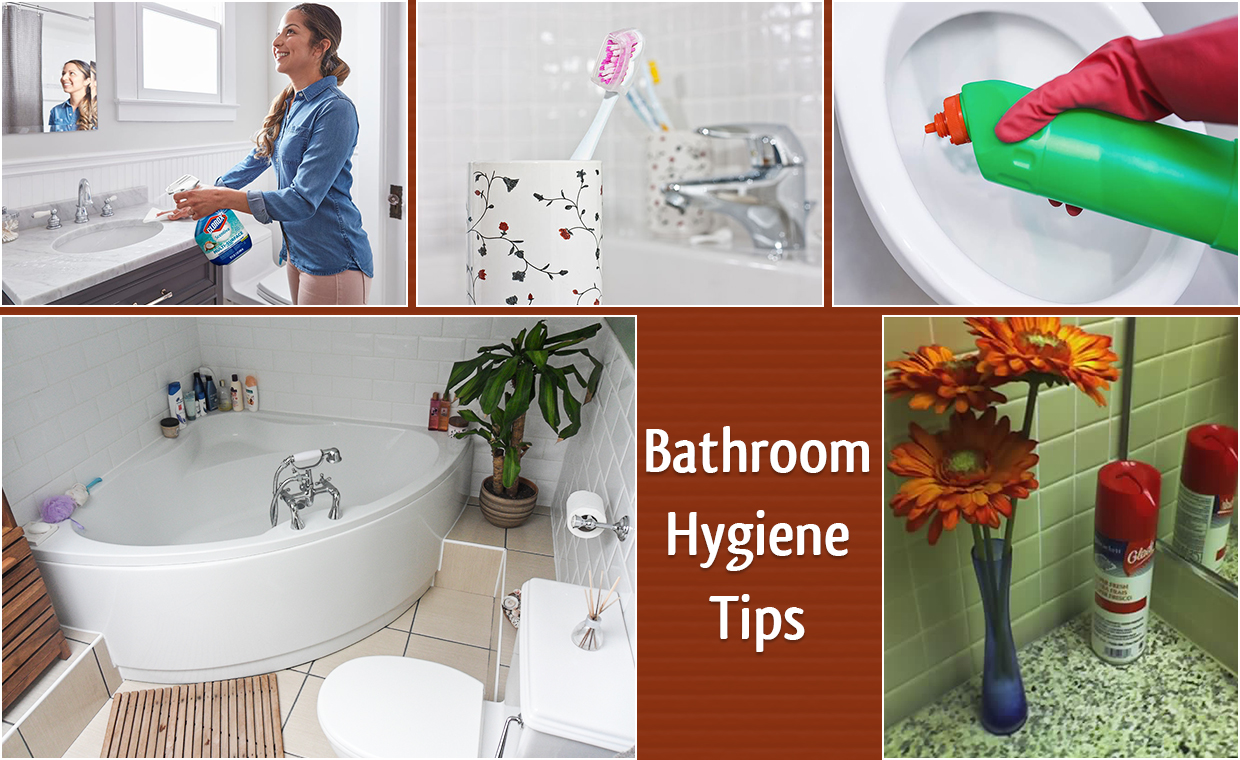Health & Wellness
Interior Design for Mental Health: A Clinical Approach – Enhancing Well-being through Design

Interior Design for Mental Health: A Clinical Approach sets the stage for this enthralling narrative, offering readers a glimpse into a story that is rich in detail with a focus on promoting mental well-being through design. This captivating approach explores the intricate relationship between interior spaces and mental health, shedding light on the transformative power of thoughtful design elements.
As we delve deeper into the concept of interior design for mental health, we uncover a world where colors, textures, and layout play a pivotal role in creating environments that nurture and support psychological well-being.
Understanding Interior Design for Mental Health

Interior design for mental health focuses on creating spaces that positively impact individuals' emotional and psychological well-being. By incorporating elements that promote relaxation, comfort, and a sense of security, interior design can play a significant role in improving mental health outcomes.
The Importance of Creating Spaces that Promote Mental Well-being
Creating environments that support mental well-being is crucial for overall health and quality of life. Spaces that are thoughtfully designed can reduce stress, anxiety, and depression, leading to improved mood and cognitive function. By considering the specific needs of individuals with mental health challenges, designers can create spaces that foster healing and emotional balance.
- Lighting: Adequate lighting is essential for creating a positive environment. Natural light can boost mood and energy levels, while soft, warm lighting can promote relaxation.
- Colors: Color psychology plays a significant role in influencing emotions. Cool colors like blue and green can evoke feelings of calmness, while warm colors like yellow and orange can create a sense of comfort and happiness.
- Textures: Incorporating a variety of textures can add depth and sensory stimulation to a space. Soft fabrics, natural materials, and tactile surfaces can enhance the overall sensory experience and promote relaxation.
- Furniture: Comfortable and ergonomic furniture is essential for promoting physical and mental well-being. Designing spaces with furniture that supports good posture and relaxation can contribute to overall mental health.
Incorporating Therapeutic Elements

Nature elements like plants and natural light are known to have a positive impact on mental health when incorporated into interior design. These elements can create a sense of calm, reduce stress, and improve overall well-being.
Enhancing Mental Health with Nature Elements
- Plants: Adding greenery to indoor spaces can help reduce anxiety, lower blood pressure, and increase productivity. Plants also improve air quality and create a connection to nature, promoting a sense of tranquility.
- Natural Light: Exposure to natural light has been linked to improved mood, better sleep patterns, and increased vitamin D levels. Incorporating large windows, skylights, and light-colored walls can maximize natural light in a space.
Calming Colors and Comforting Textures
- Colors: Soft, muted tones like blues, greens, and earthy neutrals are often associated with relaxation and can help create a soothing environment. Avoiding bright, intense colors can prevent overstimulation and promote a sense of calm.
- Textures: Incorporating soft textures like plush rugs, cozy blankets, and upholstered furniture can enhance comfort and create a sense of security. Textures that mimic nature, such as wood or stone finishes, can also promote a feeling of tranquility.
Biophilic Design for Mental Well-being
- Biophilic design involves incorporating elements of nature into interior spaces to improve mental health and well-being. This design approach can include features like living walls, natural materials, and views of nature to create a connection to the outdoors.
- Research has shown that biophilic design can reduce stress, enhance cognitive function, and increase feelings of happiness and well-being. By bringing nature indoors, spaces can feel more inviting, calming, and supportive of mental health.
Creating Functional and Safe Spaces
Creating functional and safe spaces in interior design for mental health settings is crucial for promoting well-being and reducing stress levels
Optimizing Layouts for Flow and Stress Reduction
- Open floor plans with clear pathways can help individuals navigate the space easily and reduce feelings of being confined or overwhelmed.
- Strategic placement of furniture and fixtures to create designated areas for different activities can promote a sense of organization and purpose.
- Natural lighting and views of nature can have a calming effect, promoting relaxation and reducing anxiety.
Importance of Accessibility and Safety Considerations
- Incorporating elements such as ramps, wide doorways, and grab bars can ensure that individuals with physical challenges can move around the space independently and safely.
- Choosing non-slip flooring materials and eliminating tripping hazards can prevent accidents and injuries, promoting a secure environment.
- Implementing proper lighting and wayfinding signage can help individuals navigate the space with ease, reducing confusion and disorientation.
Benefits of Sensory Rooms and Quiet Spaces
- Sensory rooms equipped with calming colors, soothing sounds, and tactile elements can provide individuals with sensory processing disorders a safe space to relax and regulate their sensory experiences.
- Quiet spaces designed with comfortable seating, soundproofing, and dimmable lighting can offer individuals a retreat from overstimulating environments, promoting relaxation and mental clarity.
- By incorporating these specialized spaces, interior designers can create environments that cater to the diverse needs of individuals with mental health disorders, promoting overall well-being and comfort.
Implementing Evidence-Based Design Strategies
When it comes to designing spaces that promote mental health, evidence-based design strategies play a crucial role in creating environments that support well-being. These strategies are rooted in research and have been proven to positively impact individuals' mental health.
Utilizing Circadian Lighting for Improved Well-being
Circadian lighting is a design approach that mimics natural light patterns to regulate our internal body clocks. By incorporating circadian lighting in healthcare or residential settings, individuals can experience improved sleep patterns, mood regulation, and overall well-being.
Integrating Smart Thermostats for Comfort and Control
Smart thermostats allow for personalized temperature control, which can have a significant impact on individuals' comfort levels and stress reduction. By giving occupants the ability to adjust the temperature according to their preferences, smart thermostats contribute to creating a more supportive and calming environment.
Enhancing Biophilic Design Elements for Connection to Nature
Biophilic design involves incorporating natural elements like plants, water features, and natural materials into interior spaces. Research has shown that exposure to nature can reduce stress, improve cognitive function, and enhance overall mental well-being. By integrating biophilic elements, designers can create environments that promote a sense of connection to the natural world.
Conclusion

In conclusion, Interior Design for Mental Health: A Clinical Approach goes beyond aesthetics; it is a tool for healing and empowerment. By prioritizing elements that elevate mood, reduce stress, and enhance safety, the design becomes a silent ally in the journey towards mental wellness.
This discussion serves as a reminder of the profound impact design can have on our mental state, urging us to embrace spaces that not only please the eye but also soothe the soul.
Top FAQs
How can lighting impact mental health?
Lighting plays a crucial role in regulating mood and energy levels. Natural light can improve sleep patterns and enhance overall well-being.
What is biophilic design and how does it benefit mental health?
Biophilic design incorporates elements of nature into interior spaces, promoting a connection to the natural world which has been shown to reduce stress and improve cognitive function.
Why are sensory rooms important in mental health design?
Sensory rooms provide a calming environment that can help individuals with sensory processing issues or mental health disorders to relax and find comfort.

Health & Wellness
Self-Care Routines That Actually Lower Health Risks

Delving into the realm of Self-Care Routines That Actually Lower Health Risks, we uncover a fascinating landscape where taking care of oneself transcends mere routine to become a powerful tool in safeguarding against various health hazards.
As we progress, a detailed exploration of the significance and impact of self-care practices on overall well-being unfolds, shedding light on the transformative potential they hold.
Benefits of Self-Care Routines

Self-care routines play a crucial role in preventing health risks and promoting overall well-being. By taking care of our physical and mental health through regular self-care practices, we can significantly reduce the likelihood of developing various illnesses and improve our quality of life.
Physical Health
- Regular exercise, such as walking or yoga, can help improve cardiovascular health, strengthen muscles, and boost immunity.
- Eating a balanced diet rich in fruits, vegetables, and whole grains can provide essential nutrients and reduce the risk of chronic diseases like diabetes and heart disease.
- Getting an adequate amount of sleep each night is essential for physical recovery, cognitive function, and overall well-being.
Mental Health
- Practicing mindfulness and meditation can reduce stress, anxiety, and depression, leading to improved mental clarity and emotional stability.
- Taking time for hobbies and activities that bring joy and relaxation can enhance mood and increase overall life satisfaction.
- Seeking therapy or counseling when needed can provide valuable support and coping strategies for managing mental health challenges.
Physical Self-Care Practices

Regular physical self-care practices play a crucial role in reducing health risks and promoting overall well-being. Activities such as exercise, maintaining a balanced diet, and getting enough rest have a significant impact on our physical health and can help prevent chronic illnesses.
Exercise
Regular exercise is essential for maintaining a healthy body and reducing the risk of various health conditions. It helps in improving cardiovascular health, strengthening muscles, and boosting the immune system. Engaging in physical activities like cardio, strength training, and flexibility exercises can also help in managing weight and reducing the risk of obesity, diabetes, and heart disease.
Proper Nutrition
Eating a well-balanced diet rich in nutrients is key to supporting overall health and reducing the risk of chronic diseases. Consuming a variety of fruits, vegetables, whole grains, lean proteins, and healthy fats provides essential vitamins and minerals that support the immune system, improve digestion, and promote optimal organ function.
A balanced diet can also help in maintaining a healthy weight and reducing the risk of conditions like high blood pressure, cholesterol, and diabetes.
Sufficient Sleep
Getting an adequate amount of quality sleep is crucial for physical health and overall well-being. Sleep plays a vital role in the body's recovery and repair processes, as well as in regulating hormones that control appetite, metabolism, and stress levels.
Chronic sleep deprivation can lead to a weakened immune system, increased risk of obesity, heart disease, and mental health issues. Prioritizing good sleep hygiene and ensuring 7-9 hours of restful sleep each night can significantly reduce these health risks and promote better overall health.
Emotional and Mental Health Practices

Emotional well-being is closely connected to physical health, as stress and other negative emotions can have a significant impact on our overall well-being. It is important to develop self-care routines that focus on managing emotions and promoting mental health to lower health risks.
Strategies for Managing Stress
- Practice deep breathing exercises to help calm the mind and body.
- Engage in regular physical activity to release endorphins and reduce stress levels.
- Establish healthy boundaries in relationships to minimize stress triggers.
- Consider seeking therapy or counseling to address underlying causes of stress.
Importance of Mindfulness, Meditation, and Relaxation Techniques
- Practicing mindfulness helps to stay present and focus on the current moment, reducing anxiety and stress.
- Meditation can improve emotional well-being by promoting relaxation and mental clarity.
- Engaging in relaxation techniques such as progressive muscle relaxation or guided imagery can help lower cortisol levels and promote a sense of calm.
- Regularly incorporating these practices into your self-care routine can improve overall emotional and mental health.
Social and Spiritual Self-Care
When it comes to self-care routines that lower health risks, focusing on social connections and spiritual practices can have a significant impact on overall well-being.
Social Connections and Health
Social connections play a crucial role in reducing health risks by providing emotional support, reducing feelings of loneliness, and improving overall mental health. Studies have shown that individuals with strong social ties tend to have lower levels of stress and anxiety, which can lead to a reduced risk of developing various health conditions such as heart disease and depression.
- Engage in regular social activities with friends and family to strengthen bonds and create a support system.
- Join community groups, clubs, or volunteer organizations to connect with like-minded individuals and foster a sense of belonging.
- Practice active listening and empathy in your social interactions to build meaningful relationships and enhance emotional well-being.
Spiritual Practices and Health
Spiritual practices have been linked to improved mental health, reduced stress levels, and a greater sense of purpose in life. Engaging in activities that nurture your spiritual well-being can have a positive impact on your overall health and help you cope with life's challenges.
- Explore meditation, prayer, or mindfulness practices to cultivate a sense of inner peace and calmness.
- Spend time in nature or engage in activities that promote spiritual reflection and connection with a higher power or purpose.
- Attend religious services, participate in spiritual retreats, or seek guidance from spiritual leaders to deepen your spiritual growth and understanding.
Closure
In conclusion, the journey through Self-Care Routines That Actually Lower Health Risks unveils a tapestry of strategies and insights that not only mitigate health risks but also nurture a holistic approach to wellness.
FAQs
How can self-care routines help in lowering health risks?
Self-care routines play a crucial role in reducing health risks by promoting healthy habits and behaviors that bolster overall well-being and immune system function.
What are some effective physical self-care practices for lowering health risks?
Physical self-care practices such as regular exercise, balanced nutrition, and quality sleep have been shown to significantly decrease the likelihood of developing chronic illnesses and other health issues.
Why is emotional and mental health important in the context of lowering health risks?
Emotional and mental health directly impact physical well-being, as stress and negative emotions can weaken the immune system. Engaging in self-care practices that promote emotional resilience can help mitigate these risks.
How can social connections and spiritual practices contribute to lowering health risks?
Maintaining strong social connections and engaging in spiritual practices can reduce stress levels, enhance overall well-being, and lower the risk of various health conditions by providing emotional support and a sense of purpose.
Health & Wellness
Yeast Infection and Bathroom Hygiene Tips for Homeowners: A Comprehensive Guide

Exploring the realm of Yeast Infection and Bathroom Hygiene Tips for Homeowners unveils a plethora of insightful information. Let's delve into the nuances of yeast infections, hygiene practices, and effective prevention strategies to ensure a healthy living environment.
Delve into the common causes, symptoms, and preventive measures for yeast infections, along with essential tips for maintaining optimal bathroom hygiene. This guide is your go-to resource for mastering the art of combating yeast infections at home.
Yeast Infection Causes

Yeast infections are caused by an overgrowth of the fungus Candida, which is naturally present in the body. Several factors can contribute to the development of yeast infections, including lifestyle choices and diet.
Lifestyle Choices and Yeast Infections
- Prolonged used of antibiotics can disrupt the balance of good bacteria in the body, leading to an overgrowth of yeast.
- Wearing tight clothing or synthetic underwear can create a warm and moist environment that promotes yeast growth.
- Excessive stress weakens the immune system, making the body more susceptible to yeast infections.
Diet and Yeast Infections
- Consuming high amounts of sugar and processed foods can feed the yeast, allowing it to multiply rapidly.
- A diet low in probiotic-rich foods like yogurt can decrease the amount of good bacteria in the gut, increasing the risk of yeast infections.
- Alcohol and caffeine can also disrupt the balance of yeast in the body, making it easier for infections to occur.
Understanding Yeast Infection Symptoms
Yeast infections can often go unnoticed due to their mild symptoms, but it's essential to be aware of the signs that may indicate an infection.
Common Symptoms of Yeast Infections
- Itching and irritation in the genital area
- Burning sensation, especially during urination or intercourse
- Thick, white vaginal discharge with a cottage cheese-like consistency
- Redness and swelling of the vulva
Manifestation in Different Parts of the Body
Yeast infections are commonly associated with the genital area, but they can also occur in other parts of the body, such as the mouth (oral thrush) and skin folds (intertrigo). Symptoms may vary depending on the location of the infection.
Differences Between Yeast Infections and Other Conditions
- Yeast infections are caused by an overgrowth of Candida fungus, while bacterial infections are caused by bacteria.
- Symptoms of yeast infections, such as itching and thick discharge, differ from those of sexually transmitted infections.
- Yeast infections can be treated with antifungal medications, unlike other conditions that may require antibiotics or other treatments.
Bathroom Hygiene Practices for Preventing Yeast Infections

Maintaining a clean and dry bathroom is essential in preventing yeast infections. Proper ventilation and effective disinfection of surfaces play a crucial role in promoting good bathroom hygiene.
Maintaining a Clean and Dry Bathroom Environment
- Regularly clean and dry all bathroom surfaces, including countertops, sinks, and floors, to prevent the growth of mold and bacteria.
- Use absorbent mats or rugs to soak up excess moisture and prevent the accumulation of water in the bathroom.
- Fix any leaks or drips promptly to avoid creating a damp environment that encourages the growth of yeast and other harmful microorganisms.
Importance of Proper Ventilation
- Ensure your bathroom has adequate ventilation to reduce humidity levels and prevent moisture buildup.
- Use exhaust fans or open windows during and after showers to allow steam to escape and keep the air circulation flowing.
- Consider installing a dehumidifier in your bathroom if ventilation alone is not sufficient to control humidity levels.
Disinfecting Bathroom Surfaces Effectively
- Regularly disinfect high-touch surfaces such as doorknobs, faucets, and toilet handles with a disinfectant cleaner to kill germs and prevent the spread of infections.
- Use a solution of bleach and water to disinfect bathroom surfaces, following the manufacturer's instructions for proper dilution and application.
- Consider using antimicrobial wipes or sprays to quickly and efficiently disinfect bathroom surfaces between thorough cleanings.
Personal Hygiene Habits to Prevent Yeast Infections
Good personal hygiene plays a crucial role in preventing yeast infections. By maintaining cleanliness and following best practices for genital hygiene, individuals can significantly reduce their risk of developing yeast infections. Additionally, clothing choices can also impact the likelihood of yeast infections occurring.
Genital Hygiene Practices
- Avoid using scented soaps or douches in the genital area, as these products can disrupt the natural balance of bacteria and yeast.
- Always wipe from front to back after using the bathroom to prevent the spread of bacteria to the vaginal area.
- Change out of wet bathing suits or sweaty workout clothes promptly to prevent moisture buildup, which can create an environment conducive to yeast growth.
- Avoid wearing tight-fitting clothing, especially synthetic materials, as they can trap heat and moisture, promoting yeast overgrowth.
Impact of Clothing Choices
- Opt for breathable cotton underwear to allow for proper air circulation and reduce moisture buildup in the genital area.
- Avoid wearing tight pants or leggings for extended periods, as they can create a warm and moist environment that promotes yeast growth.
- Choose loose-fitting clothes that allow for airflow and prevent friction in the genital area, reducing the risk of irritation and yeast infections.
Tips for Homeowners to Manage Yeast Infections

Managing yeast infections at home can be effective with the right approach. Here are some tips for homeowners to help manage yeast infections:
Home Remedies and Over-the-Counter Treatments
- Use over-the-counter antifungal creams or suppositories to treat yeast infections.
- Try natural remedies like yogurt, garlic, or tea tree oil, known for their antifungal properties.
- Keep the affected area clean and dry to promote healing and prevent further infection.
Consulting a Healthcare Professional
- If the yeast infection persists despite home remedies, consult a healthcare professional for proper diagnosis and treatment.
- Seek medical advice if you experience recurrent yeast infections, as it may indicate an underlying health issue.
- Follow your healthcare provider's recommendations for treatment to ensure effective management of the yeast infection.
Preventing Recurring Yeast Infections at Home
- Avoid wearing tight-fitting clothing and opt for breathable fabrics to reduce moisture and prevent yeast overgrowth.
- Maintain good hygiene practices, especially in the genital area, to prevent the spread of yeast and reduce the risk of infection.
- Eat a balanced diet rich in probiotics to promote healthy gut flora and support your body's natural defenses against yeast infections.
Conclusion
In conclusion, prioritizing proper hygiene practices and being mindful of lifestyle choices are key in preventing yeast infections. By implementing the tips and strategies Artikeld in this guide, homeowners can effectively manage and minimize the risk of yeast infections in their living spaces.
Stay informed, stay healthy!
Quick FAQs
What are the common causes of yeast infections?
Yeast infections can be caused by factors such as antibiotics, weakened immune system, hormonal changes, and high levels of sugar intake.
How can I prevent recurring yeast infections at home?
To prevent recurring yeast infections, it's important to maintain good personal hygiene, wear breathable clothing, avoid douching, and consume a balanced diet low in sugars.
When should I consult a healthcare professional for yeast infection treatment?
If you experience persistent or severe symptoms of a yeast infection, it's advisable to consult a healthcare professional for proper diagnosis and treatment.






